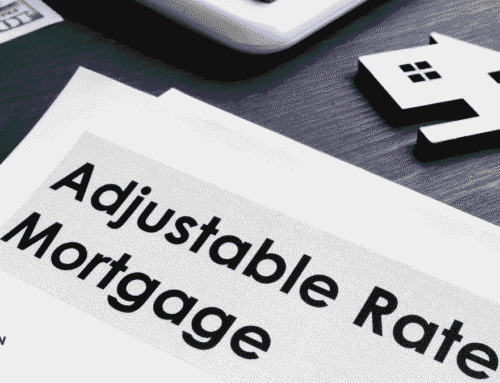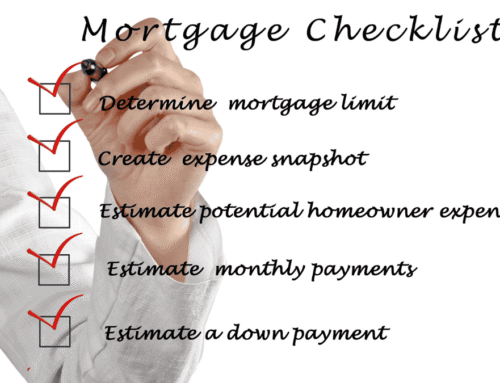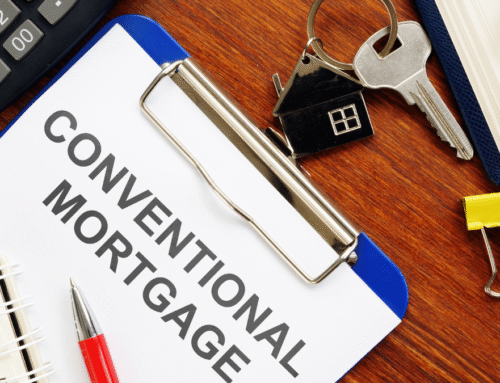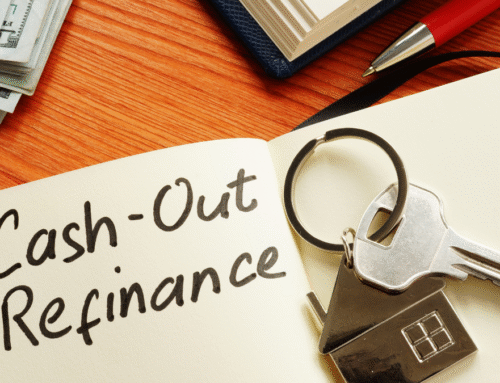DSCR Loan vs Hard Money Loan: How to Choose the Best Option For Your Rental Property Investment
DSCR vs Hard Money Loans in 2025 — Why This Guide Matters
I’ve built a U.S. rental portfolio of 120+ doors over 10 years, and I’ve used both DSCR loans and hard money loans at different stages of a deal. I’ve definitely made some mistakes along the way, and I’ve found using the wrong financing strategy at the wrong time can leave money on the table, or worse. In this guide, I’ll explain, in plain English, when each tool makes sense; whether you’re based in the U.S. or investing from abroad like me.
You’ll see how speed, cost, and underwriting differ; when to use fast hard money for acquisitions and rehabs; and when to switch to a long-term DSCR loan to lock in cash flow. I’ll also show you the common traps I see other investors fall into every week, and how to avoid them.
What you’ll learn:
- Clear definitions and use-cases for DSCR vs hard money.
- How rates, points, LTV, and timelines really compare.
- The “bridge-to-DSCR” playbook (buy, rehab, lease, refi).
- Foreign-national overlays (KYC, reserves, documentation).
- Red flags to watch for before you wire earnest money.
DSCR vs Hard Money — What They Are?
What is a DSCR loan?
A DSCR loan is mortgage product that real estate investors like me use to buy and/or refinance our rental properties. DSCR lenders qualify the loan on the property’s Debt Service Coverage Ratio (rents vs mortgage payment), not your personal income (W-2s or U.S. tax returns). Terms often include 30-year fixed, 5/6 or 7/6 ARM, and interest-only options. Prepayment penalties with step-downs are common, such as 5-4-3-2-1. Check out DSCR fixed rate vs ARM loans for a more detailed breakdown.
- Good fit: Turnkey rental property purchases, or leased rentals or already own. Also short term rentals (STRs) with solid documentation. I also use DSCR cash out refinance loans to pull equity from my portfolio for value-add asset improvements, or for downpayments on new acquisitions.
- Not ideal: Properties requiring major renovation (rehab), or rental properties that are vacant, or underented, or have a sketchy rent roll due to problem tenants.
What is a hard money loan?
Hard money is short-term, asset-based bridge financing designed for speed and renovations. I’ve used a LOT of hard money loans to buy properties. Hard money lenders focus on purchase price/ARV, scope of work, and exit plan. Typical terms run 6 to 18 months, loans are most often interest-only with points (upfront interest) paid at closing, with cash drawdowns for rehab.
- Good fit: Distressed or off-market deals, auctions, fast closes, heavy rehab/BRRRR projects.
- Not ideal: Long-term holds without a clear refi or sale timeline.
Foreign investors: DSCR lenders often accept non-U.S. borrowers with KYC/OFAC checks and extra reserves. Hard money can be simpler for fast acquisitions, then you refi into DSCR once the property is leased and stabilized.
Simple scenario comparison
- Turnkey duplex at market rent: DSCR is usually cheaper and easier for long term holds. You can use my DSCR calculators to model different loan and cashflow scenarios.
- Fixer Upper at 70% of ARV: Use hard money to close fast and fund the rehab. After placing a tenant, refinance into a DSCR loan for a 30-year term and better cash flow.
Quick Comparison: DSCR Loan vs Hard Money Loan
Here’s the at-a-glance view I wish I had on day one. Use this to decide whether to go straight DSCR, or grab a hard money bridge and refi to DSCR once stabilized.
| Factor | DSCR Loan (typical) | Hard Money (typical) | Notes |
|---|---|---|---|
| Ideal Use | Stabilized rentals (LTR/STR), rate-and-term or cash-out refi | Fast acquisitions, distressed assets, heavy rehab/BRRRR | Bridge→DSCR is common: buy/rehab on HM, then refi to DSCR |
| Time to Close | ~10–25 business days (lender/docs dependent) | ~3–10 business days (can be faster) | HM prioritizes speed; DSCR needs appraisal, rent docs |
| Rate & Points | Usually lower rate; points vary by tier & prepay | Usually higher rate; 1–3+ points up front | Ranges vary by market; model total cost over your hold |
| Term | 30-yr fixed; 5/6 or 7/6 ARM; IO options | 6–18 months, typically interest-only | HM has a balloon—know your exit |
| Max LTV (Purchase) | ~70–80% (program & DSCR tier) | ~70–85% of purchase (or % of ARV with rehab budget) | Top bands tighten for condos/STRs/jumbo |
| Cash-Out (Refi) | ~70–75% common, DSCR-dependent | Limited/rare; typically a bridge product | HM focus is acquisition/rehab, not long-term cash-out |
| Underwriting | Property DSCR vs PITIA; lease/1007; STR addendum if applicable | Asset-based: purchase/ARV, scope, draws, exit plan | DSCR may not require W-2/US tax returns |
| Fees & Prepay | Prepayment step-downs (e.g., 5-4-3-2-1) common | Higher junk fees possible; no prepay or minimum-interest periods vary | Read terms closely—penalties can change the math |
| Rehab Funding | Not designed for major rehab (light repairs ok) | Draw schedule tied to scope & inspections | HM excels at funding renovations |
| Property Types | 1–4 units, condos, many STRs; some 5+ programs available | 1–4 units, small multi; wide latitude for condition | Ask about licensing/STR rules and condo overlays |
| Foreign Nationals | Often allowed with KYC/OFAC, extra reserves | Possible, often simpler for speed; depends on lender | Then refi to DSCR post-stabilization |
| Exit Plan | Fit for long holds and cash flow | Fit for quick flip or refi to DSCR | Always define exit before you fund |
JOIN MY VIP PRIORITY INVESTOR LIST
Get the Best DSCR Loan Deals and Off-Market DSCR-Ready Investment Properties in Your Inbox Every WeekYES! ADD ME TO THE PRIORITY INVESTOR LIST
Rates, Fees & Points: True Cost Over Your Hold Period
Choosing between DSCR and hard money is a hold-period math problem. Hard money wins on speed but usually costs more per month and charges points up front. DSCR is built for long holds with lower rates and no mortgage insurance, but it often includes a prepayment step-down that matters if you plan to exit early.
You also have to consider that hard money loans are short term, and will need refinancing quickly. That adds more cost. At the same time, You may be able to get a much better deal on a DSCR loan if you spend the time and resources improving the DSCR by adding value or increasing rents.
APR ≠ outcome: Compare total dollars paid over the time you’ll actually hold the loan: points + interest carry + fees + any prepay/extension costs.
Quick example (illustrative)
- Hard Money: $250,000, 12.0% interest-only, 2 points ($5,000), 9-month hold → monthly interest ≈ $2,500; total interest ≈ $22,500 + $5,000 points = ~$27,500 (before fees).
- DSCR (refi after lease-up): $250,000, 30-yr fixed 7.25%, 1 point ($2,500); monthly P&I ≈ $1,705 (PITI higher with taxes/ins). If you hold 5+ years, DSCR’s lower rate wins big on total carry.
If your plan is buy-rehab-lease-refi in under a year, hard money’s higher rate may be the right move, as long as you can refinance to DSCR on schedule and avoid costly extensions.
Break-even on points (rule of thumb)
Break-even months ≈ points cost ÷ monthly payment (or interest) savings. Pay 1 point to drop your DSCR rate and save $45/month? $3,000 ÷ $45 ≈ ~67 months. If you’ll keep the loan longer than that (and prepay allows), buying points can make sense.
Case Study: We used a DCSR loan for a client purchasing 2 duplex buildings in Cleveland Ohio. See a detailed breakdown of all the number in the DSCR loan case study.
When to Choose DSCR vs Hard Money (Scenarios)
Choosing between hard money and DSCR financing, you can use the rules below to pick the right tool for the job. In short: stabilized = DSCR; speed/rehab = hard money. If you’re creating value with renovations, plan to refinance into DSCR once leased and documented.
DSCR wins when…
- The property is stabilized: Leased, or easily supportable market rents, and the DSCR is ≥ ~1.20–1.25×.
- You want long-term cost control: 30-year fixed or 5/6 ARM with the option for interest-only in improve cash flow and/or DSCR for better terms.
- You’re planning to hold: If you’ve completed a rehab and placed a tenant, you can use a DSCR cash out refinance to pay back your hard money loan. If you intend to sell or refinance again in the short-term, be wary of prepay penalties.
- Foreign-national friendly: My clients an I (mostly non-residents) use foreign national DSCR loans to purchase turnkey investment properties. No U.S. income or credit is required for non-residents.
Hard money wins when…
- Speed matters: You need to close in ~3–10 business days (auction, off-market, distressed).
- Rehab is real: You have a defined scope, draws, and a clear exit to sale or DSCR refinance.
- Documentation is not ready: Vacant, under-rented, or STR license pending. Stabilize first, then refinance with a DSCR.
Quick tip: If the deal only works with perfect rehab timing and top-of-market rent, it doesn’t work. Add budget/time contingency and model both paths in the DSCR calculators.
| Scenario | Recommended Loan | Why | Main Risk | Prep / Exit Plan |
|---|---|---|---|---|
| Turnkey duplex at market rent | DSCR | Lower long-term cost; easy to underwrite on DSCR | Rent overstatement; condo/HOA overlays | Model DSCR ≥1.20–1.25×; verify investor taxes/insurance; choose prepay that fits hold |
| Fixer at ~70% of ARV with clear scope | Hard Money | Funds rehab + fast close | Schedule/cost overruns; extension fees | Detailed scope, draws, contingency; refi to DSCR at lease-up |
| Auction/REO with 10-day close | Hard Money | Speed and collateral-first underwriting | Title/permit surprises; appraisal delays | Order title/inspection day one; plan DSCR refi timing |
| STR with license pending | Hard Money → DSCR | Bridge through licensing/seasonality; then DSCR on docs | License denial; DSCR short on actuals | Confirm rules, conservatively underwrite; gather booking history; refi after steady ops |
| Under-rented 4-plex (MTM tenants) | Hard Money → DSCR | Value-add via turnovers/renovations → stabilize → DSCR | Tenant delays; DSCR thin if rents lag | Set written plan; track new leases; refi when DSCR ≥ target |
| Foreign national, no U.S. W-2s | DSCR (or HM for speed) | DSCR accepts property-based underwriting; HM if closing window is tight | KYC/OFAC/reserve overlays; rate adders | Prepare passport/visa, source-of-funds; compare DSCR vs HM quotes same day |
| Condo with uncertain HOA health | DSCR if HOA strong; else HM then DSCR | DSCR cheaper if HOA qualifies; HM if time needed to sort docs/repairs | HOA litigation/special assessments | Get condo questionnaire early; if issues, fix/season then DSCR |
| Small 5+ unit with light work | DSCR (select programs) or HM then DSCR | DSCR available via niche programs; HM if capex/speed needed | Appraisal/DSCR hurdles; rehab slippage | Shop niche DSCR lenders; otherwise bridge, stabilize, then DSCR |
Bridge-to-DSCR (BRRRR) Playbook
For most of my early deals, I used hard or private money to purchase, then a DSCR loan to refinance once the property was stabilized (renovated and occupied). I’ve also used hard money when a deal needs speed to close. The strategy is pretty simple: buy with hard money, complete the work, stabilize rents, then refinance into a 30-year DSCR loan. That simple strategy has served me very well over the last 10 years. Keep the steps tight and calendar-driven so you don’t bleed cash on extensions.
- Get a real budget & timeline: Line-item scope, bids, permits, contingency (10–15%). Agree on draw milestones before closing. You WILL have cost and time overruns on almost every renovation project. that’s just the nature of the beast. Don’t panic, and plan from contingencies.
- Close with hard money: You’ll need clean title, a builder’s risk policy, scope of work, signed draw schedule, and a documented exit plan (sale or DSCR refi). If you intend to refinance with a DSCR loan, run those numbers ahead of time, and get a pre-aproval from a DSCR lender based on the after repair value (ARV), and expected market rent.
- Execute rehab & draws: This is the fun part. You’ll need to manage the rehab project. that means paying subcontractors, and taking date-stamped progress photos for you and your hard money lender. Keep any change orders in writing!
- Lease-up & documentation: You can use a property manager or leasing agent, or you can self-manage. I’ve do (and still do) both. Target market rents, and collect a signed lease, deposit proof, and if STR: license + booking history.
- Prep the DSCR refinance early: You should really have already done this part based on your projections for rents and future value. Choose the right DSCR loan structure (fixed vs 5/6 ARM; IO if DSCR is tight), and align any prepayment penalties with your expected hold period. By this point, I’ve already got my DSCR pre-approval in hand! If you’re still working it out, you can model loan types and pricing using my DSCR calculators.
- Lock & close DSCR: Personally, I work with an amazing mortgage broker who has access to a huge panel of DSCR lenders. That means I’ll get multiple quotes, and my broker will handle most of the underwriting requests from the lender to make sure the process is quick and the loan gets approved.
- Post-close hygiene: A huge lesson for me has been the importance of meticulous record keeping. Clean files will help you minimize your tax liability, and make future loan applications quicker and easier. Store the final ALTA/CD, new escrow info, and a cash-out plan for your next deal. For seasoning nuances and caps, see the DSCR Cash-Out Refinance Guide.
Foreign-national note: Expect KYC/OFAC checks, 90–120 days of statements (source of funds), and extra reserves. Wire only to verified title/escrow instructions. Also, don’t get caught is a scam… see my red flags guide.
| Phase | Typical Window | Owner To-Dos |
|---|---|---|
| Contract → HM Close | 3–10 business days | Title, insurance, scope, contractor selected, draw schedule agreed |
| Rehab Execution | 4–12 weeks (scope dependent) | Daily photos, change orders documented, inspections for draws |
| Lease-Up & Docs | 1–4 weeks | Sign lease, collect deposit, STR license/booking history if applicable |
| DSCR Refi Process | 2–4 weeks | Appraisal, lease/1007, reserves, rate lock, clear title/payoff |
Sample Draw Schedule for Hard Money Loans
| Milestone | % of Budget | Verification | Notes |
|---|---|---|---|
| Close + Materials | 10–20% | Invoices/photos | Limit upfront; protect contingency |
| Rough-in Complete | 20–30% | Inspector/PM photos | Plumbing, electrical, HVAC roughed |
| Drywall/Mechanicals | 20–25% | Inspector/PM photos | Ready for finishes; change orders stabilized |
| Finishes & Fixtures | 20–25% | Walkthrough/photos | Kitchen/bath, flooring, paint complete |
| Final/CO or Punchlist | 5–10% | Final inspection/CO | Release only after punchlist signed |
Foreign-National Overlays & Documentation
If you’re investing from abroad (like I do), you can use either DSCR or hard money. There are plenty of foreign national mortgage options, but for the most part, the combination of hard money and DSCR financing works pretty well in your want to build and scale a rental property portfolio in the United States as a non-resident.
What lenders expect (most common)
- Identity & sanctions: Passport/visa, address, and screening (KYC/OFAC).
- Source of funds: 90–120 days of statements; invoices/settlements for large deposits; simple explanation letters.
- Reserves: ~3–12 months PITIA (more for STRs, 5+ units, or jumbo balances).
- Entity vesting: Many DSCR lenders allow LLCs with a personal guarantee (PG). Bring formation docs + EIN.
- No U.S. income needed (DSCR): The property’s DSCR drives approval; U.S. credit helpful but not always required.
Quick tip: Start your source-of-funds folder early (PDF statements + explanations). It’s the #1 cause of delays for non-U.S. investors. See my Foreign National Docs Checklist.
| Factor | DSCR (Foreign-National) | Hard Money (Foreign-National) | What to Prepare |
|---|---|---|---|
| ID/KYC/OFAC | Required (passport/visa, address checks) | Required (lighter income docs; fast screening) | Passport, visa, proof of address; clear scans |
| U.S. credit | Helpful, not always required | Considered but secondary to asset | Bureau report if available; otherwise bank refs |
| Income docs | U.S. W-2s/tax returns usually not required | Not required for approval | Focus on property DSCR or asset/ARV |
| Source of funds | 90–120 days statements; trail for large deposits | Proof of funds for close + draws | Bank PDFs + simple explanation letters |
| Reserves | ~3–12 months PITIA (program/property dependent) | Liquidity for carry + rehab contingency | Bank/brokerage statements; liquid path |
| Entity vesting | LLC typically allowed with PG | Entity often allowed with PG | LLC articles/operating agreement + EIN |
| Rates/price adders | Possible +0.25%–1.00% adders; tighter LTV bands | Rate/points vary; speed premium | Request same-day quotes from 2–3 lenders |
| Property types | 1–4 units, condos, many STRs; some 5+ programs | 1–4 units, small multi; wide condition tolerance | Check STR licensing/condo docs early |
| Title/escrow | Wires must match name/entity; independent title | Escrow/title verified; fast closes possible | Call-back verification for wire instructions |
| Timeline | ~10–25 biz days (appraisal/docs) | ~3–10 biz days (asset-first) | Order appraisal day one; rehab scope ready |
| Exit plan | Long-term hold/cash-flow fit | Flip or refi to DSCR post-stabilization | Map exit on calendar; avoid extension fees |
Red Flags & Junk-Fee Traps (Before You Wire Earnest Money)
I’ve seen plenty of people get scammed looking for financing, especially in the hard money space. I’ve experienced it myself, too. Most bad outcomes I see come from rushing and not reading the term sheet – or from outright scammers pretending to be lenders. Whether you choose DSCR or hard money, use the checks below to avoid teaser rates, surprise fees, and costly prepayment clauses.
10-Minute Term-Sheet Audit:
- Is the rate tied to a specific lock period and index (e.g., 5/6 ARM = SOFR + margin)?
- Are points and origination listed separately from “processing/underwriting” fees?
- Confirm prepayment terms (step-down vs minimum-interest vs make-whole).
- For HM: exact draw schedule, inspection fees, and extension costs in writing.
- Who orders the appraisal? AMC fee? Turnaround time? Re-use allowed?
- Title/escrow: name on the wire matches the commitment; request CPL + wiring verification.
Common DSCR Pitfalls
- Teaser rates: Quote assumes top DSCR tier (e.g., ≥1.25×) or lower LTV; final pricing bumps after appraisal/1007.
- Step-down confusion: 5-4-3-2-1 applies to refi and sale. Verify curtailment allowance (often ~20%/yr).
- “No-prepay” that isn’t: Fine print still charges minimum interest or has exceptions for the first 6–12 months.
- Condo/STR overlays: HOA litigation, reserve studies, or STR licensing can force lower LTV or pricing adders.
Common Hard Money Pitfalls
- Points relabeled as fees: “Admin/consult” fees act like extra points. Total them up!
- Extension traps: 1 to 2% per month to extend the loan period if you miss the balloon; calendar your refi milestones. This can happen a lot with rehab projects, so have contingency money in place just in case.
- Draw friction: Slow inspections, re-inspections, weekend delays, all these can kill your timelines and cash flow.
- ARV retrade: After appraisal, the lender might try to cut ARV/LTC and ask for more cash. Have backup capital or a Plan B.
Security tip: Wire fraud is real. Always phone-verify title/escrow instructions using a known number. See my docs checklist for a simple wire verification script.
For a deeper dive into lender tactics and how I negotiate them, read my DSCR Red Flags Guide.
| Trap | Why It’s Bad | How to Spot It | What to Ask / Do |
|---|---|---|---|
| Teaser DSCR rate based on top tier | Final price jumps after appraisal/1007 | Quote assumes DSCR ≥1.25× or lower LTV | Ask for pricing grid by DSCR/LTV; require a same-day written lock scenario |
| “No-prepay” with minimum interest | You pay a penalty disguised as interest | Fine print: minimum 6–12 months interest | Confirm 0% on sale/refi; get step-down schedule in writing |
| Points hidden as “processing/underwriting” | Total cost higher than quoted | Fee sheet lists many small lender fees | Request an all-in lender fee total; compare APR & dollar cost |
| ARM index/margin unclear | Payment shock after reset | “Index TBD” or margin missing | Require exact formula (e.g., SOFR + 3.50% caps 2/1/5) |
| HM extension fee surprises | Cost spike if refi slips | Extension = 1–2% per month | Pre-approve extension terms; calendar milestones |
| Slow or picky HM draws | Schedule delays and cash crunch | Multiple inspection fees; long windows | Lock inspection SLAs and fee per visit; define photo requirements |
| ARV/LTC retrade post-appraisal | More cash at closing or smaller rehab | Lender reserves right to adjust after ARV | Get a minimum funding commitment tied to appraisal methodology |
| Condo/STR overlays cut LTV | Lower proceeds or pricing adders | HOA litigation, reserve %; STR license pending | Get condo questionnaire early; verify STR permits and taxes |
| Title/wire risk | Funds lost to fraud | Email-only wiring instructions | Phone-verify wiring; request CPL; use known title contacts |
Final Thoughts: Pick the Right Tool for the Deal
Over the course of all my own deals, and now helping other foreigner buy rental properties in the U.S., I’ve learned a lot about financing. Simple put, use hard money when speed and renovations matter; use a DSCR loan to lock in long-term cash flow once the property is stabilized. Model both paths with realistic rents, taxes/insurance, and a prepayment plan that fits your hold period.
Remember, success in real estate requires, planning, people, and pennies! You’ll need to build your team of experts, including mortgage brokers, realtors, lenders, contractors, inspectors, appraisers, property managers, and of course a good attorney. Real estate is a team sport, so start building your team before your start building your portfolio.
Then, make sure you plan ahead. I can’t tell you the number of people I speak to that went out there and bought a house, did some renovations, and are now looking to refinance but are finding it very challenging. They typically haven’t planned ahead and figured out their exit strategy and the terms they’ll get, and now they’re having to throw more money at the deal to pay back their private lender, or worse, can’t qualify for DSCR financing.
If you want to stay ahead of the game, you can join my VIP Priority Investor List, and I’ll send you DSCR financing deals, and off-market DSCR-ready investment properties every week!
GET PRE-APPROVED FOR THE BEST DSCR LOAN RATE
Start your real estate investment journey today, and get pre-approved for the Best DSCR Loan Interest Rates from market leading lenders!
“Having personally invested in over 120 US rental properties from overseas, I know the true value of getting the right advice and support.
David Garner – Cashflow Rentals

GET PRE-APPROVED FOR THE BEST DSCR LOAN INTEREST RATES TODAY!
Start your real estate investment journey today get pre-approved for the best DSCR loan interest rates from market leading lenders!
“Having personally invested in over 120 US rental properties from overseas, I know the true value of getting the right advice and support.
David Garner – Cashflow Rentals
DSCR vs Hard Money — FAQs
Can I refinance a hard money loan into a DSCR loan?
Yes. That’s the common “bridge-to-DSCR” path: buy and rehab with hard money, then refinance into a 30-year DSCR loan once the unit is rent-ready and documented. Lenders will look for a qualifying DSCR (often ~1.20–1.25×), clean title, and an appraisal/1007 or lease.
What DSCR do I need to qualify for the best pricing?
Pricing tiers vary by lender, but many improve noticeably once you’re at ~1.20–1.25× DSCR or higher. Lower DSCRs can still be approved with tighter LTV or higher rate. If you’re close, consider interest-only or a 5/6 ARM to reduce PITIA and lift DSCR.
When is hard money better than DSCR?
Use hard money when you must close fast (auctions/off-market), when a real rehab budget is required, or when rent/licensing documents aren’t ready. Plan your exit: lease-up quickly and move to DSCR before balloon deadlines and extension fees bite.
Do DSCR loans have prepayment penalties?
Often yes—step-down structures like 5-4-3-2-1 or 3-2-1 are common. Some lenders offer no-prepay options at a higher rate. Match prepay to your hold period, and get the exact terms in writing to avoid surprises on a sale or refi.
What LTV can I expect with DSCR vs hard money?
For stabilized 1–4 unit rentals, DSCR cash-out caps are commonly ~70–75% (program-dependent). Hard money is usually framed around purchase price/LTC/ARV and may require more equity during rehab. Always underwrite proceeds against your real plan.
Can foreign nationals use DSCR or hard money?
Yes. Many DSCR and hard money lenders work with non-U.S. borrowers. Expect KYC/OFAC checks, a clear source-of-funds trail, and extra reserves. For DSCR specifics, see my Foreign-National DSCR Guide.












